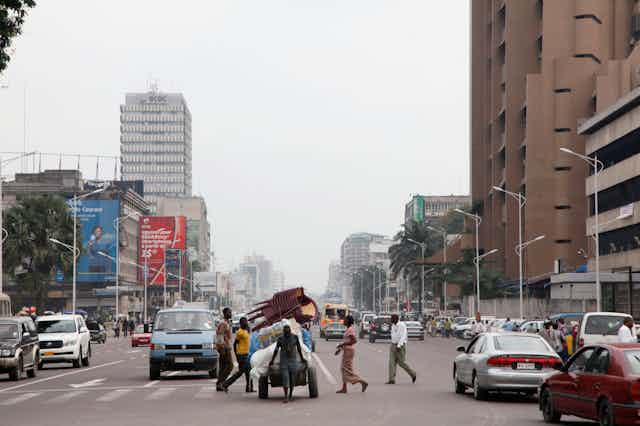The images used by charities and NGOs can become deeply ingrained in the memories of supporters, donors, development partners and the “beneficiaries” themselves. These stories colour what is generally known about global poverty and the developing world.
One of the most notorious examples was the media and charity coverage of the Ethiopian famine in the early 1980s. Powerful and disturbing images brought the reality of the famine into the lives of millions of British people and fast became the currency of the media and NGOs.
But there’s a problem with this. The use of such imagery seems to confirm rather than challenge traditional perceptions that Africa is underdeveloped and not capable of dealing with its own problems.
In 2021, I purchased 17 national newspapers in the UK every weekend over a period of six months. The aim was to explore whether charity adverts have changed in recent years and what kinds of characters are represented in fundraising campaigns.
After analysing a total of 541 fundraising images, one of the major findings was that Africa continues to be over-represented in charity adverts supporting international causes. Over half of the images (56%) focused on countries in Africa. And almost none of these images contain whole family units – rather they are set in rural areas and feature women and children.
But there is also evidence that charities are actively responding to previous critiques of using shock tactics, dehumanisation and employing images to evoke emotions.

Why does it matter?
By constantly focusing the spotlight on African countries, charities reinforce historical stereotypes of underdevelopment that equate Africa with poverty.
A report from 2010 that was commissioned by the Department for International Development, for instance, found that the UK public view “developing countries” as synonymous with “Africa”. They associate Africa with poverty and misery, reflecting some of the representations used in charitable appeals.
The consistent portrayal of these depictions in various campaigns has promoted the view among the British public that there has been little to no progress in economic and social development across Africa since the 1980s. This has contributed to the belief that Africa is a “bottomless pit” in terms of charitable efforts and the constant need for foreign aid.
But, in reality, this is not the case. Africa is developing fast. It has the world’s youngest and fastest-growing population which, by the middle of this century, is expected to hit 2.5 billion.
Addressing stereotypes
Nevertheless, my findings do suggest that the sector is making strides towards decolonising narratives and addressing its use of damaging stereotypes. In 2016, a study found that 34% of all British charity adverts used “pitiful images” that explicitly emphasised human suffering.
However, by 2021, only two out of the 27 charities that placed adverts used pitiful images in their fundraising appeals. This amounted to 11% of all adverts as these charities repeatedly used such imagery over the six month study period, but it still represents a significant decline.

Women and children continued to be the most popular characters in newspaper adverts. But, compared to similar studies from 2013 and 2016, there was a significant reduction in the use of images of children. In 2021, 21% of charitable campaigns featured images of children, down from 42% in 2013.
By 2021, 20% of all the images used in charitable campaigns were also of people characterised as professionals or leaders from developing countries. These people included doctors, nurses and other development workers, offering a more realistic view of people from Africa.
Several factors have prompted charities into reconsidering the potential damage of the representation they use and the stories they tell in recent years. One of the main factors is the need to decolonise narratives by reducing the use of negative stereotypes.
The Black Lives Matter protests in 2020 were a significant catalyst in charities rapidly adopting or updating their ethical imagery policies. The protests alerted people and organisations to the injustices of colonial histories.
The COVID pandemic was also instrumental in charities being forced to employ local photographers and filmmakers in the countries where they deliver programmes. Travel restrictions that were imposed during the pandemic meant charities were unable to fly in their own staff.
What next?
Images have the potential to inflict damage. So communications professionals in the charity sector must strive to diversify the characters they portray.
But the public has a level of responsibility too. We all need to be careful about making assumptions of other countries and cultures when viewing charity images in newspaper adverts. Photographs may not always provide a complete picture.

